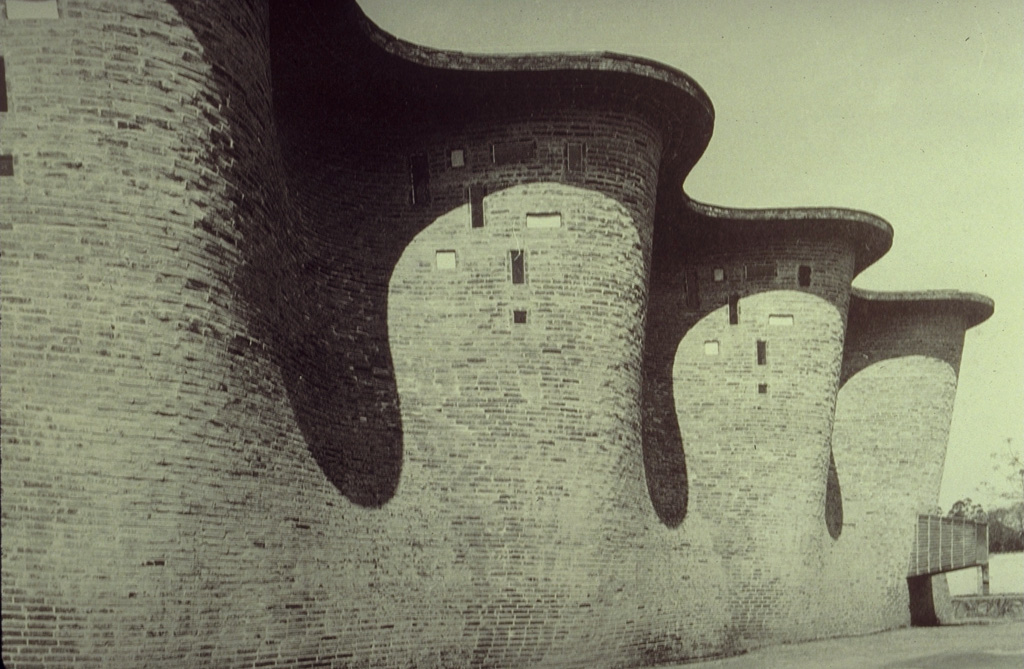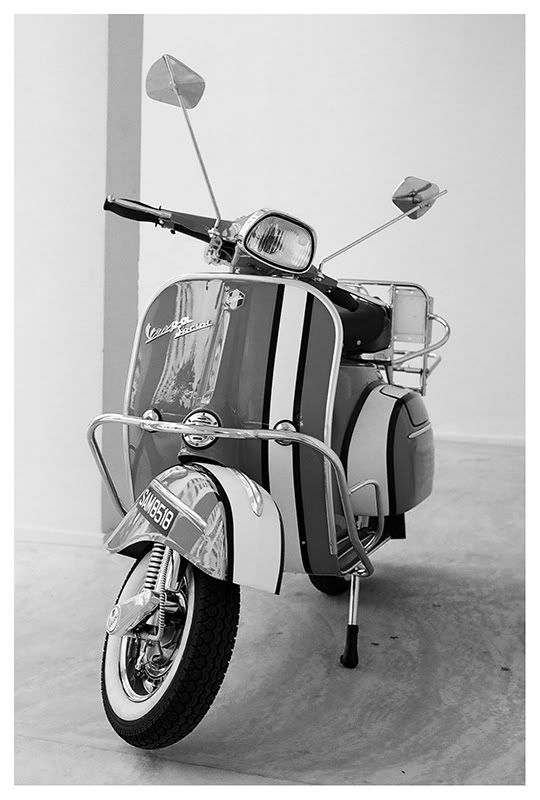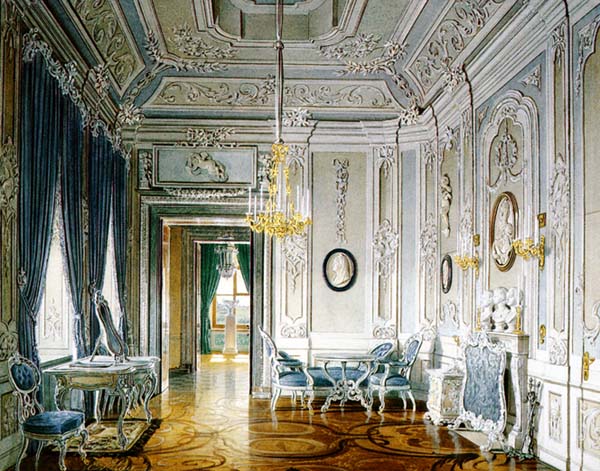
















One Industrial Design students attempt to find good mexican food in Rhode Island
Yesterday I was talking to some people about how my old neighbors had an all granite top on an island in their kitchen and about how cool it was because it was like one big cutting and mixing surface. One of my friends said that that was bad for knives and I said that I didn’t think that that mattered. My friend then shrugged her shoulders in disbelief. She must have been thinking, is this the same Ryan who loves tools and despises all who abuse them and is always yelling at everyone to cover up the surface plates in the metal shop and is all obsessed with buying new cutters for the router and Bridgeport and drill press so his cuts will be wicked accurate.
Well, I have to admit; sometimes I don’t make any sense, why did I think that recklessly dulling the kitchen knives was okay? Isn’t that just like using the good Gingher scissors to cut cardboard or using a wood lathe to cut cement or any of the other stupid uses of tools that I so often rant about and despise? After a few moments of reflection I realized that the difference was that I really liked the experience of having the big granite cutting mixing board, in fact, If cutting cardboard with Gingher scissors was fun enough I might approve of it too.
This little collision was kind of like the conversation I had with Nancy about what I like and what my design process might be. After trying to get to the bottom of all my posts and then trying to boil that bottom down even farther we came to a list of things that might be what I am all about, things like Green, Local production, Small scale, Simple and efficient.
The few days between me and that talk have had me thinking about what my design process is really all about and what is it that really links all the things that I like together in some way that makes sense. Sometimes the objects that I like do not seem to fit together to make a theme and yet to me they do perfectly. If I were to list some favorite designed things from the top of my head it might go like this, Pagani Zonda supercar, Calfee Bamboo bicycle, Moulton new series commuter bike, Old Vespas, Eladio Dieste warehouse at Montevideo, most new Mac products, sandals made from chunks of car tires (homemade kind), Chartes cathedral, Festool woodworking products, most if not all Rococo artifacts (sofas, chairs, prints, etc..) Sam Maloof rocking chairs, Buckminster fuller dymaxion series (house, car world map, housing, domes), Ford T buckets with blown Keith Black big block Hemis, Starcks juice squeezer, and on and on. In this list are things that I like for the same reasons I don’t like other things, For instance, I like bicycles because they do not pollute very much and are very efficient, I also like Paggani Zondas a lot but they pollute a lot and are very inefficient. Even after writing that down I still feel fine about liking both but the reason that is possible is still a little bit of a mystery. A clue came when thinking about the granite dulling the knives. Normally people excessively dulling sharp tools for no good reason drives me crazy but I have no problem with cutting on granite because the enjoyment that I had gotten from it was more important. In the end the reason we have all of this crap around is too have a good time, right? Maybe I am a hedonistic designer?
In the book Zen and the Art of Motorcycle Maintenance, Robert Pirsig suggests that there should be a new metaphysical construct with the term quality at its foundation. To Pirsig Quality is not an attribute but is actually a description of the process in which we see and construct values, our instant perception of good and bad, like being able to here if an orchestra is in tune or not without having musical training. Quality is the description of knowing if something fits or not, the highest quality things being those that fit in anywhere were the lowest quality things may never fit anywhere. I feel like the best way for me to understand this is through the word harmony. Something that is perfect is in harmony with the whole of existence.
I believe that my design process is based on this sense of harmony. All of the objects that I feel drawn to have this sense of harmony but do not necessarily have any other specific attributes in common. That is why I don’t usually have a good answer when people ask me about my design sense or design process. The Bamboo bicycle strives to make individual transport more enjoyable, sustainable and ecologically responsible achieving in my eyes a sense of harmony. The 1000 horsepower super dangerous ford T bucket recycles vintage auto parts and turns them into something that is so scary that it is only driven occasionally and for the delight of many, harmony again. Sometimes having a vague compass like harmony can be frustrating, sometimes it is hard to spot out of context but the objects that have these attributes can easily be spotted. They are the things that are cherished.


Like most lines that we draw to delineate between categories, the line between design and art gets harder and harder to place the longer you look at it. The tools that we might use to determine if something is a product of art or design don’t always give us clear answers. A good example of this for me is the Droog Do Hit Chair. The Do Hit Chair looks like it is simple and cheap to manufacture, a cube made of sheet metal presents no immediate challenges to a modern factory and in volume this chair should be dirt cheap. This seems to point towards it being a design object. The price, however, is 3.800 Euros. This seems to point to it being art. Like a sculpture or painting which derives its value primarily from the reputation and skill of the artist who made it and not from the materials it was made with. Everything else about the chair seems to point to the design side of things, it is not one of a kind like a piece of studio furniture, it is not custom made for the buyer and it does not have the signature of the maker on the bottom. It just seems to be an over-priced product of design, it should just be something on a sale rack at Design Within Reach marked 95% percent off so that some farmer can just buy it and drill a hole in it and funnel rain water into it for the chickens to drink. What about this chair keeps it off the sale rack, why do hip people everywhere dream of buying and smashing and then finally sitting on these polished steel cubes? Why would someone ever pay 3800 hundred Euros for a sheet metal box?
The Reason is that it is a piece of Art. At least it derives its value in the same way that a piece of art does. When someone buys a painting or a sculpture or a photo they are buying the object and they are buying a piece of the artist’s viewpoint, a physical manifestation of the feelings and opinions and beliefs of one person. If this person is important enough the value they add to an object can be immense. The Do Hit Chair gets its value through this process, the viewpoint or concept of the designer is what is valuable, not the object. The object is still important because it is the factual proof that you have participated in Marijn van der Poll’s vision.
The primary difference between this type of value and the way that we value more traditional design objects can be subtle but I think that it is definable. If we use an Eames LCW plywood chair as an example of traditional values it will help. Eames chairs are comfortable, producible and affordable*. They were mostly designed as contract furniture for office buildings or other large scale projects and as such needed to be functional, affordable and durable. If someone is waiting for an appointment they do not care about the designers idea of what chair should be, at least not as much as they care about the comfort of their butt. Eames did have and use their own viewpoint to find solutions for each project they worked on, but unlike Marijn van der Poll, they had to temper their concepts with good old functionalism. If they did not their work would not be produced and we would not know who they were and we would not have the joy of relaxing on an Eames Lounge or Chaise or shell chair.
I don’t know if there is much of a point in having an opinion as to the rightness or wrongness of all this. But I can say that some art/design just seems like a stupid waste of time and resources, like glittery poop and ugly toxic foam chairs and sharp smashed metal do hit yourself box chairs and original zig zag chairs set on fire, but there are a lot of things I don’t understand so it doesn’t seem like a good basis to judge right and wrong by. I do think that we should probably keep these art/design people around because even if all they ever do is make a bunch of crap that is silly it is still more crap to think about and the more we have to think about the better.
*I thought that I was making a little bit of sense here but then I was scrolling down the Design Within Reach page and I saw the Eames Le Chaise priced at 9,500 hundred dollars. That seemed a little high to me and then I realized that the art/design system of value was working in reverse. Is it that the Eames story has become so powerful that it is now adding value into these objects that they did not originally have or is that they are just classics now. Maybe they cost that much because somewhere there has to be a huge 200 ton injection molding machine pumping those things out at a snail’s pace burning a big hole in the Knoll furniture companies bottom line.


Bicycles are the best way to get around. They are the most efficient and the funnest and they are pretty cheap and way better than walking. If you have a tail wind or if you are going downhill it doesn’t even take any energy to drive one. Even though bicycles are this cool they still have a few problems. The worst problem is flat tires; the second worst problem about bicycles is all the unrecyclable and energy intensive materials they take to create. However, the bamboo bicycle has come to right these wrongs, well at least the sustainability one, sadly bamboo tire technology has not been developed. It turns out that the natural strength and rigidity that allows bamboo to grow so tall also comes in handy for bicycle frame construction. By replacing the metal or composite tubes that a bicycle frame normally uses one can create a super low carbon footprint bicycle frame.
This technology is not necessarily new but in recent times it has become viable as a durable replacement for traditional metal construction. Bamboo bicycle frames have coexisted with metal bicycle frames since the bicycles inception. However their fragile nature has relegated them to the sidelines. In the past they were always assembles with rigid metal joints that would wear away at the soft bamboo tubes until the failed. Modern bicycles frames made from bamboo use a high strength fiber like hemp and a strong adhesive binder to join the tubes. These connections are very similar to the bamboo in strength and ductility thus allowing the frame to last much longer. The pioneer in this kind of construction is Calfee bicycles.
A lot of thought seems to be going into transportation lately, more specifically making it more efficient. The bicycle is already crazy efficient and can be made from green materials easily. IF we figure out that flat tire thing the car is going to go the way of the dinosaur, fossilized.
Designing for a different culture presents a unique set of challenges, actually just communicating with a different culture can be a challenge. There is a lot more than just learning the language, social standards and etiquette can change subtly or drastically making effective communication difficult or impossible. Positive comments can be taken as insults and the food you like to eat might be deemed unfit for the dog. These types of challenges create a tough barrier for designers interested in creating solutions for other cultures. These barriers get even more difficult to cross when considering the international problem of refugees. Refugees can be found in every part of our globe and are in need of food, clothing, shelter, and a clean place to go #2. We would hope that providing for mans basic needs would be a walk in the park at this point but unfortunately it is far from it. 50,000 displaced people in need of immediate food, clothing, shelter and bathrooms is a monumental problem and if you are trying to find solutions for these problems that can be deployed anywhere in the world then you have at the very least a doubly monumental problem. The seemingly hopeless search for solutions to the world’s displaced people’s problems has but one light at the end of the tunnel, the solar cooker.
The solar cooker is pretty close to a truly universal design. True, you do need the sun, so displaced people in extreme longitudes may have a problem for half the year, and you do need some foil or mirrors or something reflective but these things are pretty cheap and pretty common so all in all I would say it would probably work for 90% of the other 90%, that’s 81%, not too bad. If the solar cooker is indeed the shining light of universal humanitarian design than what does it teach us that we may be able to apply to the other areas of necessity? After all we still have to figure out a way to put the right food in the cooker and how to provide shelter and clothing and bathrooms. I think that the lesson of the solar cooker is to keep it simple. If we are to provide all of the essentials for life to millions of people from different cultures in different environments we need fundamentally simple solutions.
To find these solutions we must follow the path of science. Ever since Newton provided a seemingly universal set of laws to observe the universe with science has been on the hunt for a universal and inclusive explanation of all of the universes phenomena. Unfortunately, just like scientists, we find ourselves stuck. Physics has the irreconcilable laws of relativity for massive objects and the laws of quantum theory for small and design has Ikea and Disneyland and supermarkets and Brooks Brothers and Home Depot and highways and subways and airplanes (etc.) for the 1st world and the solar cooker and some broken tents and rice and beans and outdated cancer drugs for everyone else. To follow the way of the solar cooker we must use the scientific method to figure out what the most basic common denominators are between people and their problems. The solar cooker did this perfectly, people need concentrated heat to cook, people have the Sun, the sun is hot, use the sun. We just need to apply this formula to the rest of the problems. People need shelter, people have dirt and rocks……




The last minute planning for my trip to New York entailed going onto the internet and searching for various museum and store locations addresses on Google maps and then transferring these addresses and small maps of their locations into my sketchbook. While I was doing this I was thinking about how if I had an I phone I could just get the directions when I got there and that if I had a Google phone I could even get street level pictures of the places I wanted to go to so I would know when I was there. This then made me think of how one would get these directions before the internet and the advent of mapping solutions like MapQuest and Google maps. I would have had to look in the phone book when I got to New York and then ask around to find out where to go and then make sure to follow those oral directions carefully or else I might spend half the day lost. By comparison even my slightly antiquated Google maps to sketchbook conversion method started to look pretty convenient. I started to wonder how many different designed tools I was taking advantage of when planning my day’s travels, turns out it was quite a few. If I define something as being designed if it is not naturally occurring then the macro list of designed things I used to plan my trip is, sketchbook, pen, computer, internet (Google search, Google maps, Google street view, websites for the Metropolitan museum of art, Mood fabrics, GROM gelato, Museum of Modern Art and the Cooper Hewitt Design Museum), the system of addresses, my cell phone and the system of phone numbers. That is a pretty long list but the list of designed tools that people can use and have used to get around is probably approaches the infinite, starting with the astrolabe and probably ending with the Zebra.
If an astrolabe and a zebra were the tools that you had to get around New York then you would only be able to navigate at night when the stars were out and it would be pretty hard to find out anything more specific than your latitude and then you would never get really good gelato. On the other hand if you have a fully charged Google phone you can just get off of the bus and walk around with your phone on showing you a satellite view of where you are and a little dotted line showing you which way to go to get just about anywhere you desire as long as its address is on the web. The exaggerated example of zebra guy and super tech phone guy makes it easy to see the ways in which a designer can affect how we experience the world around us. By creating objects and systems with certain uses a designer can offer us a solution for a problem that we might have. This solution will most likely require us to act in a certain way for it to produce its intended effect and we as users can decide to participate in this way or not. When viewed like a formula it is easy to see how a designer can change or direct human behavior in the way he sees fit. For instance the astrolabe inventor demanded that we stay up at night to find our location on the globe while the cell phone designer requires that we have a source of 110v regulated electricity and a monthly communications contract to get directions. At this basic level the control the designer can have over our actions can be easy to spot, however, when we consider the effects of culture and ingenuity we can see a different picture. In the hands of a more savvy user a Google phone might be the best way to orchestrate a crime or check out porn on your coffee break or maybe cheat on a test and if you were to try to commercially navigate the seas with an astrolabe you would probably get a fine and end up selling it on eBay to pay for that fine to someone who would use it to show how sophisticated they were as a paper weight in their office. Each alternate use for a product changes the products meaning from what the designer envisioned it as to what the individual user thinks it is. Because each individual sees the world and the things in it differently the gap between the designer and the user will always be there. No object can ever have the same meaning to any two people. As designers we can try to bridge this gap through research of our target groups environments and beliefs and styles but in the end we have to realize that once an idea becomes material it will be interpreted in ways that we can never imagine.
I often interpret my own ideas in ways I have never imagined